During the pandemic, many farmers’ markets saw a much-welcomed wave of new customers—masked friendly faces who embraced purchasing directly from farmers and small producers as an alternative to supporting grocery store corporations. While COVID restrictions are no longer in place at markets, the obstacles that farmers and small producers are facing have continued to grow and change.
Frank Cochrane from Cochrane Family Farm shared a video standing a field of potatoes, beans, onions, and peas that is now completely underwater.
A changing climate poses increased challenges for producers
We’ve found ourselves repeatedly saying “it’s more important than ever to be buying local” for the last three years, and this sentiment has not changed. The winter of 2022 was marked by several major storms on many weekends, resulting in a huge loss of income for producers and farmers’ markets. This year’s dry spring, wet summer, and extreme weather events have resulted in many farmers losing crops and income throughout the season. We’re still assessing the damage of last week’s floods in real time as we speak.
But isn’t rain good for farmers? Yes and no. While farmers wished for rain during the spring drought, the excess of rain and lack of sun so far this summer has not been kind for many crops that need relatively dry foliage and plenty of sun rays to thrive. Many farmers experienced delays in planting and sowing this season, as it was too risky to let seeds and seedlings soak in water for weeks. After extreme rain this past weekend, fields and greenhouses have turned into swamps and rivers. Road conditions forced many vendors to stay home and lose a precious week’s worth of income during peak market season.
Frank Cochrane from Cochrane Family Farm shared a video standing a field of potatoes, beans, onions, and peas that is now completely underwater and up to the top edge of his rain boots. He reflects, “be careful what you wish for.” Noah Pohlkamp-Hartt from New Caledonia Farm shared a video of water rushing through his greenhouse, and he was harvesting crops underwater by memory in order to get ready for his Saturday market. Sally Knight from Strattons Farm shared that they’ve seen a “lack of germination, crops rotting due to the water sitting in them, yields are down and growth has been slow.” Adam Webster from Olde Furrow Farm says that this year is “very likely our worst growing season ever.” And Sue Earle from Tipsy Toad Grove Farm says that her “market garden has been a complete nightmare this year. Some things were replanted 3 times before they germinated.”
Climate change is here to stay, and its effects will continue to be felt in increasingly intense and unpredictable fashion, directly affecting our producers on their farms, and indirectly affecting our food system. One need look no further than the fact that our only rail connection to the rest of the country is currently severed due to last week’s floods, for example.
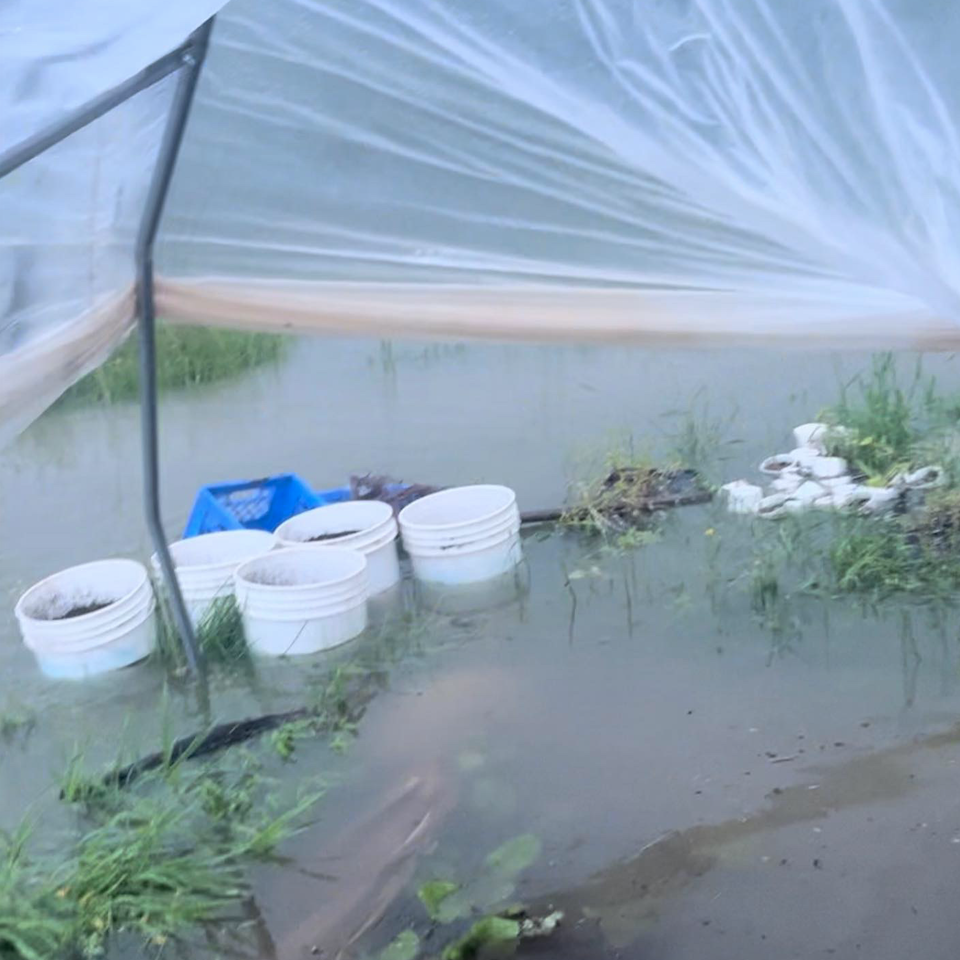 Noah Pohlkamp-Hartt from New Caledonia Farm shared a video of water rushing through his greenhouse on Friday July 21, 2023.
Noah Pohlkamp-Hartt from New Caledonia Farm shared a video of water rushing through his greenhouse on Friday July 21, 2023.
Buy local: Our community is a balm for corporate greed and inflation
Recent data by the Canadian Competition Bureau shed light on the way Canada’s grocery store industry profiteers from we, the consumers. While three companies have continued to amass profits and gain increased power and control over our food system, food costs and food insecurity have increased and surpassed predictions. The situation is upsetting. These corporations are not accountable to the interests of farmers or consumers, and we are all paying the price.
The situation facing Nova Scotians won’t be solved by big corporations. If it could be, then the provincial objective of ensuring all food consumed by Nova Scotians would be locally sourced by 2020 under the Province’s now scrapped Environmental Goals and Sustainable Prosperity Act would have happened. Instead, we’re presently at no more than 10%. If the status quo were to work, then 22% of Nova Scotians wouldn’t have experienced food insecurity last year, a rate that continues to rise.
We need to build resilience, transparency, trust, and community back into our food system. If Nova Scotia wants to preserve and grow our buy-local culture, to stop relying on three giant grocery store corporations, to grow our community-oriented food system, to ensure farmers can have thriving and sustainable businesses, Nova Scotia needs to buy local more. This will require massive investments in regionally appropriate local food infrastructure, leadership from government to preferentially source local in its public institutions, and policies and regulations that enable local producers to thrive, rather than punish them.
It’ll also require Nova Scotians to step up and buy local. We have the most farmers’ markets per capita in the country. Simply shopping at your farmers’ market will play an enormous role in rebuilding and strengthening local and sustainable food systems right here at home. One that is accountable, responsive, and resilient to stressors like climate change. One based on community, cooperative, trust, and transparency, rather than profiteering and control.
 Get your own copy of our 2023 Map of Farmers’ Markets in Nova Scotia here.
Get your own copy of our 2023 Map of Farmers’ Markets in Nova Scotia here.
How you can help Nova Scotia’s buy-local movement
If you’re currently a regular farmers’ market shopper:
- Continue to share your experience by word of mouth, as this is the most effective way to get new customers in our doors.
- Share social media posts by your market and your favourite vendors.
- Purchase gift cards or market money as gifts for teachers, friends, employees, teenagers, etc.
- Leave a positive Google review of farmers’ markets and local food businesses. Have concerns? Address them directly, not online.
- Share your love of local. Bring a friend to your market and buy them your favourite treat. Get them hooked on that delicious cinnamon roll, pork bun, or samosa! Offer to bring a vegetable platter, some local sausages for the grill, or a box of pastries to your next party.
- Have a business or storefront that supports local? Request market maps from us to display!
- Please remember: Avoid shaming people for shopping non-locally, as this does more harm than good. Instead, celebrate the positive aspects of buying local. Many people are limited in their shopping choices since 22% of Nova Scotians experience food insecurity, and we recommend always speaking from a non-judgemental place.
If you’re not a regular farmers’ market shopper:
- Welcome to our community! Find a farmers’ market near you in our market map.
- Make a list before you go if you aren’t used to the bustling environment. Some people find it hard to make choices on the spot (us included)!
- Go early for the best selection and for a quieter shopping experience.
- Ask farmers for tips on cooking and storing their produce.
- Start small and enjoy exploring how you can slowly replace your grocery shopping with local options.
- This is not all-or-nothing. Market shopping should be fun and inspiring, and there is no shame in making it more manageable and sustainable for you. Every local purchase helps.
- Embrace seasonal eating and enjoy trying new foods available only at farmers’ markets.
- We have a popular monthly newsletter on how to cook seasonally, so sign up for The Basket today.
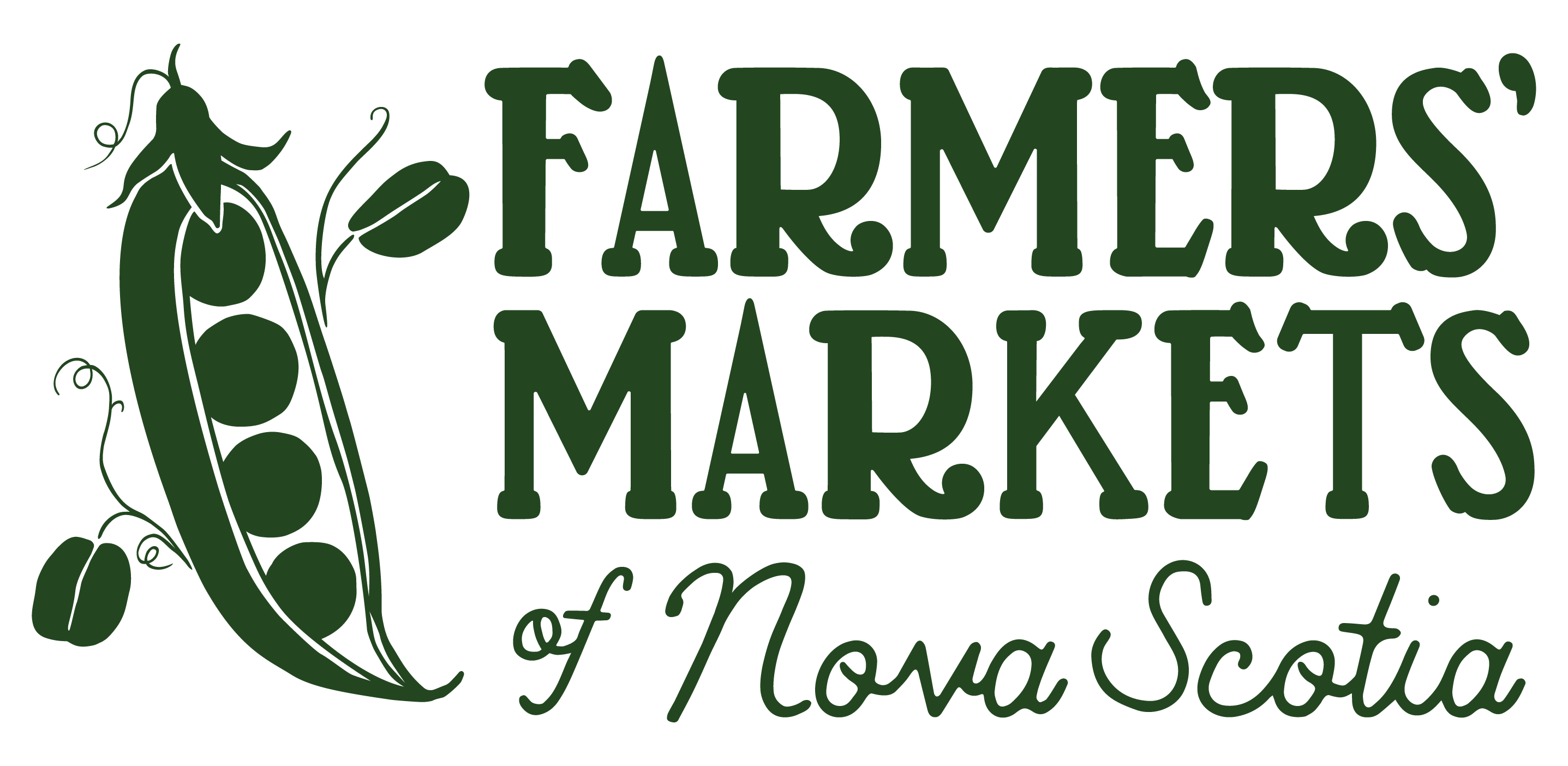

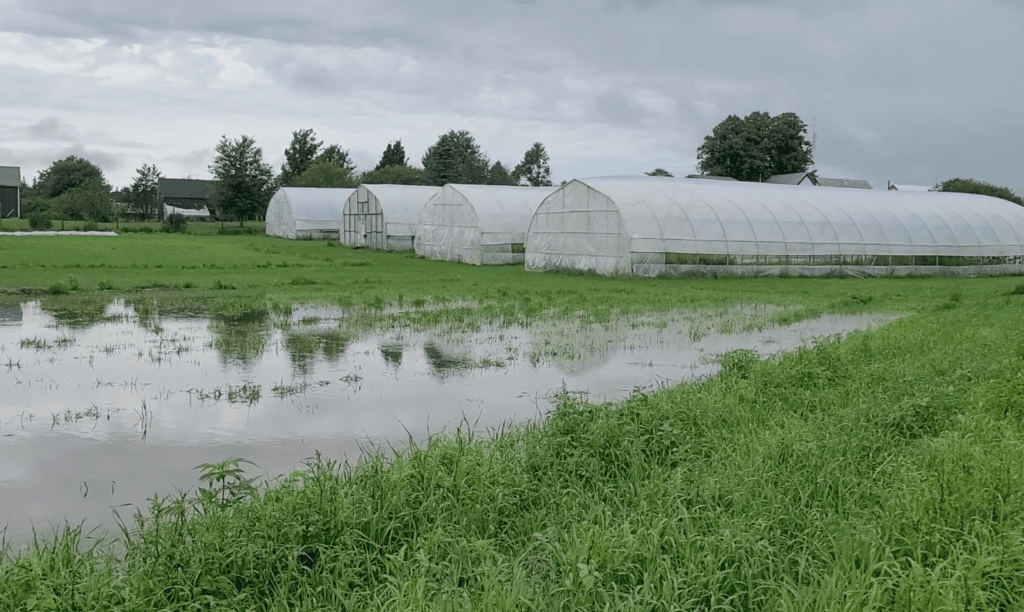


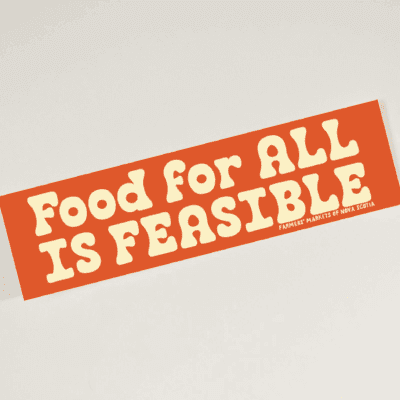
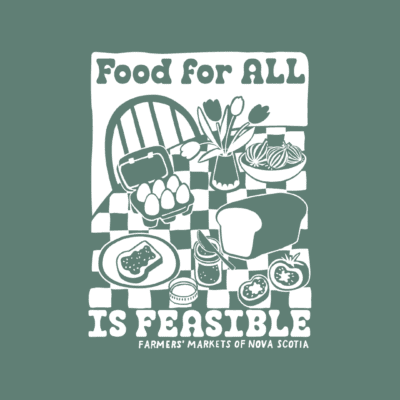

Product is always fresher and can cost the same as the big box stores. Do what you can to support YOUR local grower!
We agree! Fresher than fresh!
Really timely food for thought here. Thank you.
Thank you for leaving a comment, Nancy! We appreciate it.
As “they’ve” always said: use it or lose it. If we truly value having a huge range of top quality locally-grown produce and fruit available to us, we absolutely must ensure our buying patterns demonstrate that value. Speaking from experience, I can say it is possible to give up buying those bananas and other tropical fruit almost all the time. We’ve set 95% as our target for buying local food and have found that allows us to purchase the coffee my husband values, the olive oil, cinnamon and other spices we use, and the other imported produce we like to have occasionally. Couldn’t we all move closer to the place where purchasing non-local food is a well-considered occasional treat?
I agree, Nancy. Our parents and grandparents would only have very special foods like grapes and citrus fruit at Christmas, if even then. Things were locally produced, grown at home where possible and either stored in root cellars or preserved by canning and pickling. We seem to be unable to go without any food now, which is tipping the balance in favour of the mega-corporations who don’t feel the narrow margins our local producers do. I will strive to do even better with local shopping and our farm markets are wonderful supports for this.
Apart from the quality of the produce at farm markets, one of the things that used to take me directly to the farm was the price. Now, as farm markets expand to carry crafts, giftware etc,, they are no longer small roadside stands. With the overhead associated with expansion, the prices are often higher than the big chains. I understand that farmers aren’t making much money even with these higher prices. With grocery prices so high, shoppers must chase the sales. I want to support the farmers; I have farmers in my family, but I’m torn. I don’t have a solution except that I buy from the littlest operations I can when I can. What else can I do?